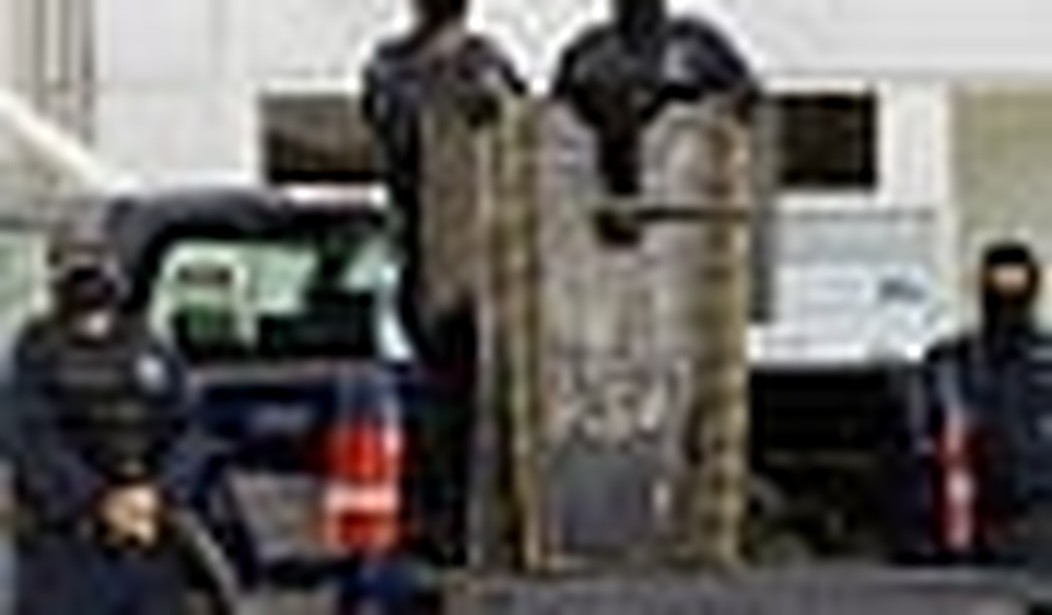Last week, in Mexico’s Sonora province, authorities claimed to have captured two “anti-aircraft machine guns,” potentially signaling a significant escalation in drug cartel violence.
Anti-aircraft machine guns are crew-served weapons either mounted to vehicles or in fixed placements. They have the ability to fire long bursts in the hopes of shooting down low-flying aircraft. Such weapons would be capable of destroying unarmored police vehicles and other civilian vehicles in seconds. They would also pose a significant risk to small observation aircraft and helicopters.
The problem with the claim, however, is that Mexican authorities — already exposed for using the Obama administration’s debunked claim that 90% of cartel weapons come from the United States — once again seem to be exposed as serial exaggerators.
On April 14, Mexican federal police proudly displayed firearms seized from a cache thought to belong to the Beltran Leyva drug cartel. One of the weapons labeled by Mexican authorities as an anti-aircraft gun was featured in a Daily Mail article, while the other, mounted behind a crude armored shield, was the subject of another series of images.
The problem with the narrative presented by the Mexican federal police is that while these guns are indeed capable of causing great destruction, these weren’t the weapons presented to the world’s media, which unfortunately lacks the editorial talent or experience to know it is being duped.
Let’s return to the Daily Mail article, which is typical of the reporting of the weapons cache seizure. The article related the Mexican police claim that:
The anti-aircraft gun, capable of penetrating armor from more than 5,000ft away and found attached to the top of a SUV, was the first of its type to be seized by Mexican police.
The firearm shown, however, was not an anti-aircraft gun and was not capable of “penetrating armor from more than 5,000 feet away.” It also wasn’t attached to an SUV. It was, instead, what appears to be a 1919A4, a .30-’06 caliber World War II-era medium machine gun typically fitted on a low tripod for infantry use against ground targets. While still a serious threat to Mexican police and military units, the .30-’06 weapon is simply not capable of being used to hit moving aircraft at above treetop level. That’s because the tripod is too low to the ground to allow the rear of the gun to be depressed and the front of the gun to be raised to engage airborne targets.
But what about the other “anti-aircraft gun,” the Browning .50-caliber machine gun mounted behind a crude welded shield in the bed of a truck?
The gun is indeed .50-caliber and is obviously based on the M-2 Browning, but it isn’t a variant designed for an anti-aircraft role. Nor — according to the Alcohol, Tobacco and Firearms agency (ATF) — is it a machine gun:
Mexican and U.S. authorities disagree on just what type of gun it was. Federal Police Coordinator Gen. Rodolfo Cruz maintains it was .50-caliber anti-air craft machine gun. ATF, the U.S. Bureau of Alcohol, Tobacco, Firearms and Explosives, said it was an unmodified .50-caliber semiautomatic rifle made by TNW, a U.S. firearms manufacturer.
As it is the Bureau of Alcohol, Tobacco and Firearm’s (BATF) specialty to trace firearms and the serial number and other markings on U.S.-made firearms, let’s presume this organization is more likely to be correct than a Mexican police official.
TNW is TNW Firearms, Inc, a gun company with an interesting specialty: re-manufacturing WWII-era surplus machine gun parts into firearms that look like the originals but only fire as semi-automatic weapons. When cross-referencing the photo of the gun shown in the bed of the truck with the appropriate entry in the TNW product catalog, it becomes painfully obvious that while the gun did come from a U.S. manufacturer, it is not an anti-aircraft weapon or even a machine gun.
Interestingly enough, another re-manufactured semi-automatic firearm TNW builds is a 1919, which bears an uncanny resemblance to the first “anti-aircraft” gun mentioned that was also captured in the raid. It would not be all that surprising to discover that it is also a TNW-manufactured semi-auto. Neither TNW nor the BATF office in Phoenix would return calls or emails asking for more detail.
Mexican authorities are not fabricating the fact that weapons are flowing from the United States into Mexico, but they are exaggerating what kind of weapons they are recovering, either through ignorance or purposeful deception.
I’ll leave it to the reader to determine which is more likely.









Join the conversation as a VIP Member